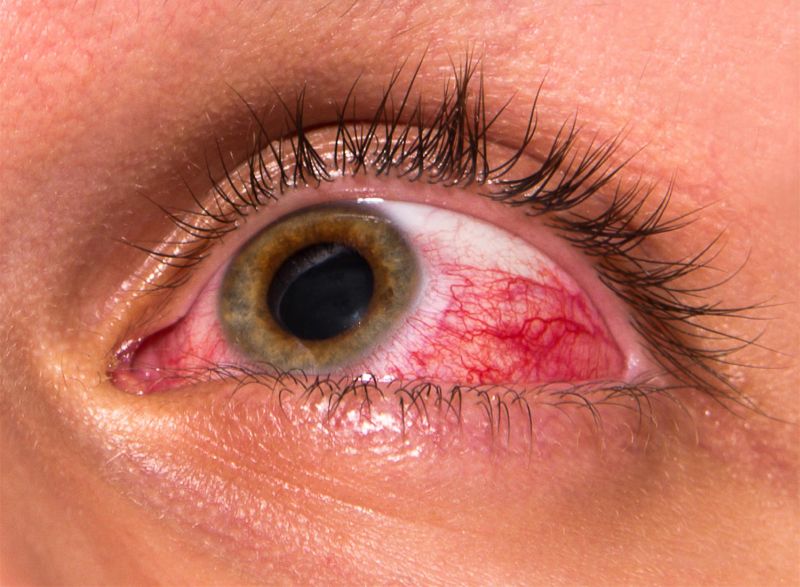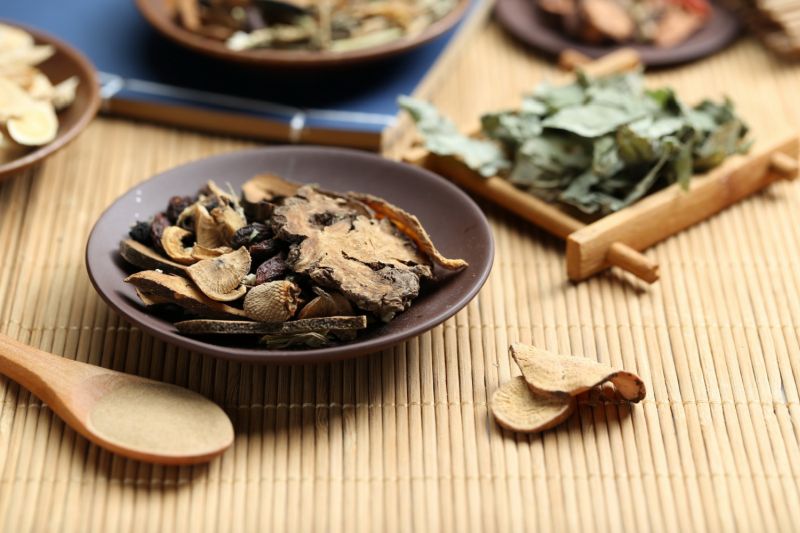Integrative TCM Approach to Uveitis
Integrative TCM Approach to Uveitis
What is Uveitis?
Uveitis is a form of eye inflammation that can cause the layers of the uvea to be inflamed in either one or both eyes. It can lead to various complications if managed improperly. This condition can also be divided into four categories depending on which part of the eye it is found in:
- Anterior uveitis
Also known as iritis, anterior uveitis is a common form of uveitis. It affects the front part of the eye, such as the iris and the area around it. Symptoms of this condition may be presented as eye pain, sensitivity to light, and blurred vision.
- Intermediate uveitis
Intermediate uveitis impacts the middle part of the eye, near the vitreous humour. If it is left untreated, it could potentially spread to the retina and iris. While this condition is usually more common in young adults, it can occur in individuals of all ages.
- Posterior uveitis
Posterior uveitis affects a layer on the inside of the back part of the eye. It can be caused by infections such as toxoplasmosis, cytomegalovirus (CMV) retinitis, and histoplasmosis. This type of uveitis is usually painless but is more likely to cause vision impairment compared to the rest.
- Panuveitis
Panuveitis occurs when all layers of the uvea, including the front, middle, and back of the eye are inflamed. The cause of this condition is unknown but may be attributed to an injury or an autoimmune disorder.

What are the common symptoms of Uveitis?
While the symptoms of uveitis may be different depending on the part of the uvea that is affected, several common symptoms can be shared between them.
Redness of the eye
Uveitis may lead to the development of red and swollen eyes. This is a common symptom of the condition, and the severity can vary depending on the extent of the inflammation and the type of uveitis.
Blurry vision
Inflammation can cause blurry vision as it may affect the structures of the eye responsible for focusing light, such as the lens or retina. This condition can also lead to an increase in the Intraocular Eye Pressure (IOP), which can affect the shape of the eye and cause blurry vision.
Eye pain
Those with uveitis may experience a dull ache or a sharp pain in or around the eye. The pain may worsen with eye movements and its intensity will depend on the severity of the inflammation and the specific part of the eye that is affected.
Sensitivity to light
Sensitivity to light, also known as photophobia, is an increased sensitivity to bright lights or glare, which can cause discomfort or pain in the eyes. This symptom is caused by inflammation in the iris. The iris controls the amount of light entering the eye by adjusting the size of the pupil. If it is not functioning properly, the pupil will be unable to constrict properly in response to light.
How does TCM understand Uveitis?
Traditional Chinese Medicine (TCM) does not view uveitis as a condition that is confined to a specific organ but as a result of an imbalance in the body’s internal environment. The condition is often linked to two patterns:
Liver heat
Liver heat, also known as liver fire (肝火) may be presented as bloodshot eyes, headaches, or a rapid pulse. In TCM, this organ is responsible for the smooth flow of Qi throughout the body, with its disruption potentially leading to health issues. Its imbalance is believed to be caused by an unhealthy diet, excessive negative emotions, along with liver yin deficiency.
When it comes to uveitis, liver heat is said to have contributed to inflammation and irritation of the eye. While other organs can be affected, there is a greater chance of the eye being susceptible. This is because the liver meridian is connected to our vision, and disturbances to the organ can impact eye health.
Wind heat
Wind heat (风热)in TCM refers to an external pathogen which can cause symptoms such as fever, an aversion to cold, and a rapid pulse. In contrast to liver heat, wind heat is considered an external condition that can affect anyone, regardless of their internal health.
Furthermore, the eyes are seen as delicate organs and are sensitive to changes in the environment such as a sudden rise in temperature or a shift from cold to warm weather. The symptoms that wind heat can bring are also characteristics of uveitis, as it leads to inflammation, redness of the eyes, and excessive tearing.

What are the treatments in TCM for Uveitis?
TCM treatments for uveitis take into account not only the individual’s condition but also the condition of their entire body. These treatments include acupuncture, which stimulates Qi flow to alleviate pain and inflammation, and herbal medicine, which comes together to restore balance.
“I have been a patient of Dr Pat Lim for more than a year. During my first visit, Dr Lim is very patient and she takes the time to listen and explain what we hoped to achieve realistically and the treatment required.
After about 3 months of treatment, I begin to notice improvements in my sleep, my appetite and my stamina (or qi in Chinese terms). As explained by Dr Lim, TCM takes a holistic view of the body and ‘unblock’ the meridians and strengthens the organs in order for the eye ailments to improve.
At every visit, Dr Lim will conduct scans for the eyes and compare them to the initial visit which is the base line. Slowly I see improvements in the eye scans month after month. The TCM medicine is also readily brewed and vacuum packed for convenience. For modern busy people, gone are the days where you need to spend hours brewing your medicine. The medicine is easy to bring along on overseas trips as well.
I would highly recommend Dr Pat Lim for any eye conditions. She takes the time to listen to feedback on the medication and adjust accordingly. She is very approachable and also treats all her patients like her friends.”
Acupuncture
Acupuncture is the insertion of fine needles into acupuncture points to promote the flow of Qi throughout the body. These points are selected based on the individual’s condition and underlying imbalances. In the context of uveitis, this treatment may be used to help reduce inflammation and alleviate eye pain and excessive tear production.
Here are some common acupuncture points your doctor may select if you choose to undergo acupuncture.
- Chengqi
This point lies directly below the pupil in the infraorbital ridge. It is commonly used in the treatment of eye disorders to improve circulation and reduce inflammation.
- Zanzhu
It is located in the crease at the inner ends of the eyebrow. Zanzhu is used to alleviate eye pain, blurry vision, and red eyes.
Sibai
- Sibai is located below the acupuncture point of Chenqi. This point is used to dispel wind as well as reduce the symptoms of eye pain and excessive tearing.
Herbal remedies
Herbal remedies are part of TOM's approach to eye disorders such as uveitis. They aim to reduce inflammation, clear heat from the body, and often have cooling properties. Some herbs that are commonly used include:
- Selfheal fruit spike (Xia Ku Cao)
In TCM, this herb falls under the category of herbs that clear heat and purge fire. It is believed to have cooling properties, lending to its use in alleviating heat-related symptoms of inflammation, fever, and red eyes. As it is cold, Selfheal fruit spike can also help those who have an excess of yang energy in the body and promote the circulation of Qi.
- Wild Mint (Bo He)
Wild mint has cooling properties that can clear wind heat from the body. This makes it a common presence in herbal remedies that are intended to reduce symptoms associated with an excess of heat such as irritation, swelling of the eyes, and inflammation.
- Cassia seed (Jue Ming Zi)
Cassia seeds are used in TCM as they are said to improve vision and clear liver heat which can relieve symptoms such as red and dry eyes. It is also often used alongside other herbs to address specific eye conditions.
Dietary adjustments
Dietary adjustment is often used alongside other treatments. It involves recommendations for the patient to either increase or reduce their intake of certain foods. These dietary recommendations aim to reduce inflammation within the body and are part of TCM’s holistic approach to managing uveitis.
This could include consuming foods that are considered cooling to help reduce excess heat in the body. Examples of these include watermelon, cucumber, and celery. On the other hand, patients may be advised to either avoid or reduce their intake of spicy and heaty foods, as these could worsen heat-related conditions and add to the presence of heat in the body.
As TCM emphasises moderation when it comes to food intake, you will not be encouraged to replace your diet with cooling foods only, as it may backfire and lead to an excess of cold in the body. Therefore, it is important to speak with your doctor before making any changes to your diet.

Are you interested in TCM as an approach to uveitis?
Are you or a loved one interested in learning more about TCM treatments for eye disorders such as uveitis? Feel free to contact us if you would like to learn more and we will be in touch soon.

